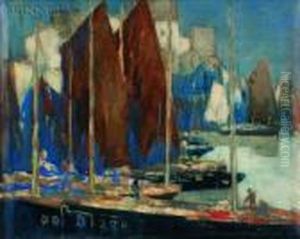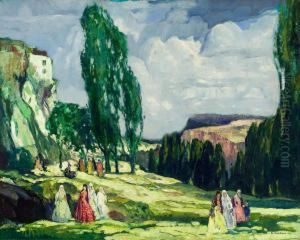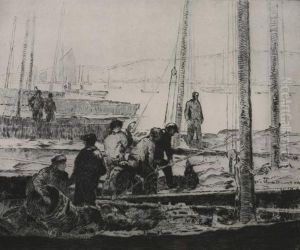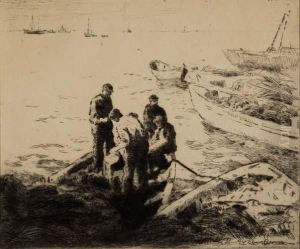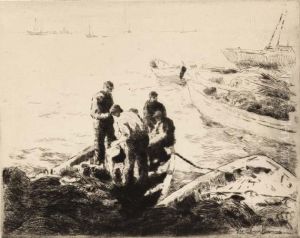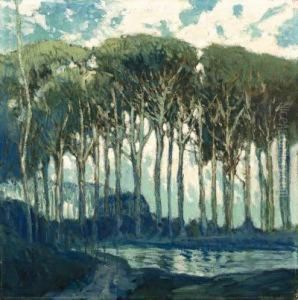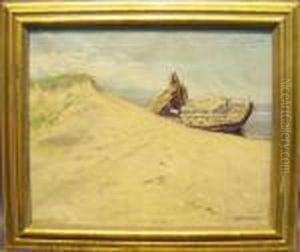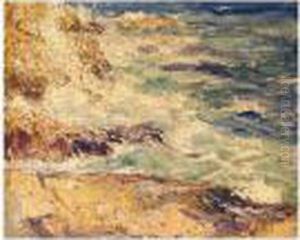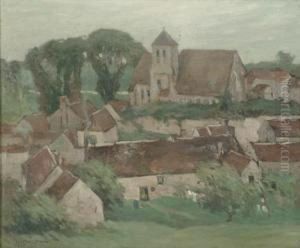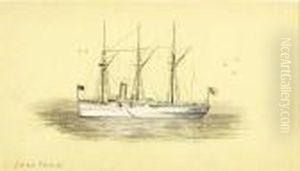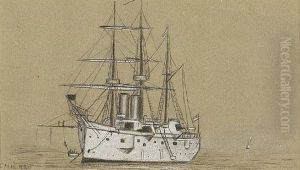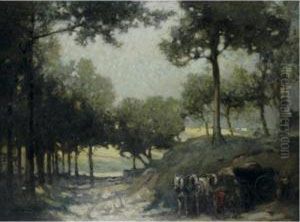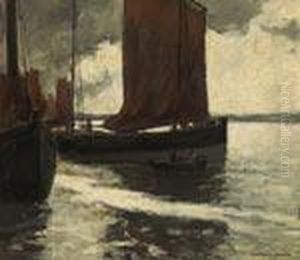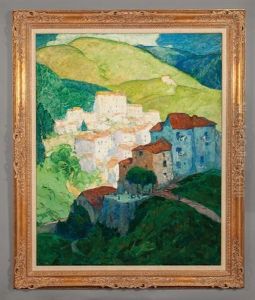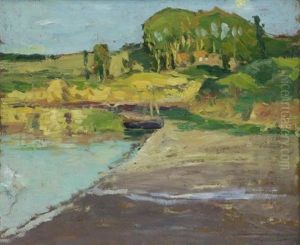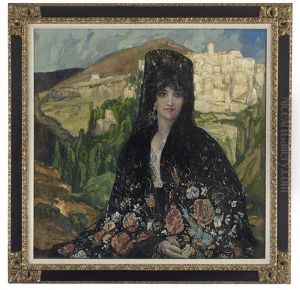George Elmer Browne Paintings
George Elmer Browne was an American artist known for his impressionistic landscapes and marine paintings. Born on July 6, 1871, in Gloucester, Massachusetts, Browne grew up in a region that would significantly influence his artistic development. The coastal scenery and maritime culture of New England provided a rich tapestry of subjects for his work throughout his career.
Browne's education in art began at the School of the Museum of Fine Arts in Boston, where he studied drawing and painting. He further honed his skills under the tutelage of noted artists such as Joseph DeCamp and Edmund C. Tarbell, who were prominent figures in American Impressionism. In pursuit of a broader perspective, Browne traveled to Paris to study at the Académie Julian, a popular school for American artists abroad, where he was influenced by leading French Impressionists.
During his time in Europe, Browne traveled extensively, capturing the landscapes and city scenes of France, Italy, and the Netherlands in his work. His European sojourns also brought him into contact with other American expatriate artists, and he became well-connected in international art circles. Browne's paintings from this period are characterized by a vibrant palette, loose brushwork, and a keen interest in the effects of light, hallmarks of the Impressionist style.
Upon returning to the United States, Browne settled in New York City and became an active member of the American art community. He exhibited at prestigious venues such as the National Academy of Design and the Pennsylvania Academy of the Fine Arts. Browne was also a member of the Salmagundi Club, an important association of American artists.
In addition to painting, Browne was a dedicated teacher, sharing his knowledge and passion for art with a new generation of painters. He founded the Browne School of Art in Provincetown, Massachusetts, which became a summer hub for artists and students attracted to the region's natural beauty and the thriving art colony there.
George Elmer Browne's work received significant recognition during his lifetime, including awards and medals from various art institutions. His paintings are part of the collections of major museums and have been shown in numerous exhibitions dedicated to American Impressionism.
Browne's later years were marked by a continued commitment to painting and teaching. He remained active in the art community until his death on May 31, 1946, leaving behind a legacy as an influential American Impressionist and mentor to many artists who followed in his footsteps.

